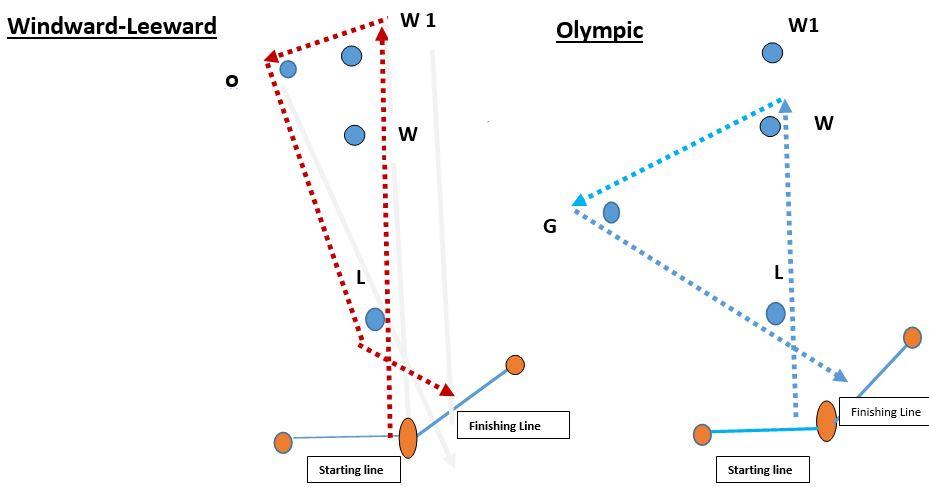DBSC Courses

There are three varieties of courses used in DBSC racing.
The diagram above illustrates the windward-leeward/Olympic courses used on Saturday afternoons for the Club’s Green Fleet racing. The twin starting/finishing line, with the finishing set an angle of 450 approx. to the starting line is something of an innovation. Its purpose is to provide a reaching finish, so that record-keepers can more easily read boat’s sail numbers. (Course Card 3 contains sailing instructions). Other varieties of windward-leeward courses are used for dinghy racing on Tuesday evenings and Saturday afternoons.
Racing around the club’s twenty six fixed marks takes place on Tuesdays, Thursdays and Saturdays. Courses are set out on Course Card 1 (one card for each day) with a separate course for each cardinal and inter-cardinal wind direction. Such courses are sometimes pejoratively described as “round the cans” which is misnomer. DBSC marks are not “cans”, a term more properly applicable to navigation marks, but of a cubic (six-sided) configuration set on rounded base. However way you might describe it, this particular course is particularly suited to DBSC’s cruiser fleets, the varied windward, downwind and reaching legs giving no advantage to any particular boat design.
The third variety is “platonic” courses. The terms has nothing to do with Platonic geometry or philosophy – as some DBSC mathematically-minded sailors sometimes surmise – but is, in fact, an acronym. It is used to describe the courses around the fixed buoys , selected on an ad hoc basis by the Race officer to suit particular conditions. The club’s first acronym was Pluto which stood for Seapoint (P), South Bar (L), East Mark(U), T(Bulloch) and Bay Mark (O). Over time the number of marks was increased. Hence, “Platonic”, but unfortunately, recollection of the marks concerned is hazy.
Nowadays, the term has lost its original logic but almost everyone understands what it means.
